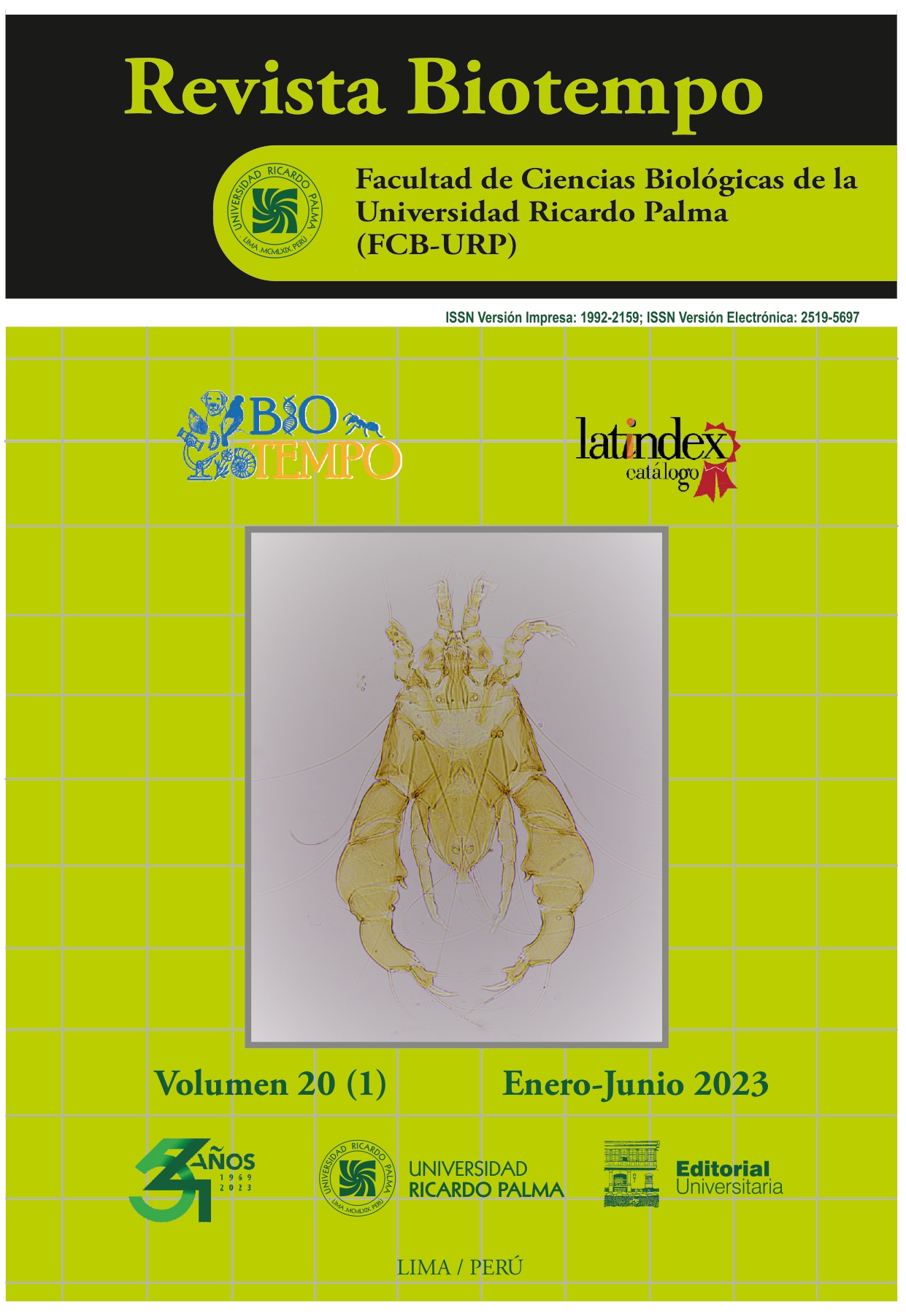Comparison of indirect immunofluorescence and ELISA for the diagnosis of Neospora caninum in alpacas
DOI:
https://doi.org/10.31381/biotempo.v20i1.5630Keywords:
alpaca, concordance, IFAT, Neosporosis, sensitivity, specificityAbstract
The aim of this study was to compare the techniques of indirect immunofluorescence (IFAT) and Enzimo inmunoensayo (ELISA) techniques for the diagnosis of Neospora caninum Dubey, Carpenter, Speer, Topper & Uggla, 1988 in alpacas from the highlands of Peru. Sensitivity, specificity, positive predictive value, negative predictive value and concordance of IFAT were evaluated using a commercial competitive ELISA kit (cELISA - VMRD) as a reference. 1540 sera samples were collected from alpacas naturally exposed to N. caninum. The results showed good sensitivity (92.95%), high specificity (99.75%), positive predictive value of 92.90% and a negative predictive value of 99.04%. The concordance between both diagnostic techniques (IFAT and ELISA) turned out to be almost perfect (k = 0.98). It is concluded that the IFAT test has a high efficiency for the diagnosis of N. caninum in alpacas.










